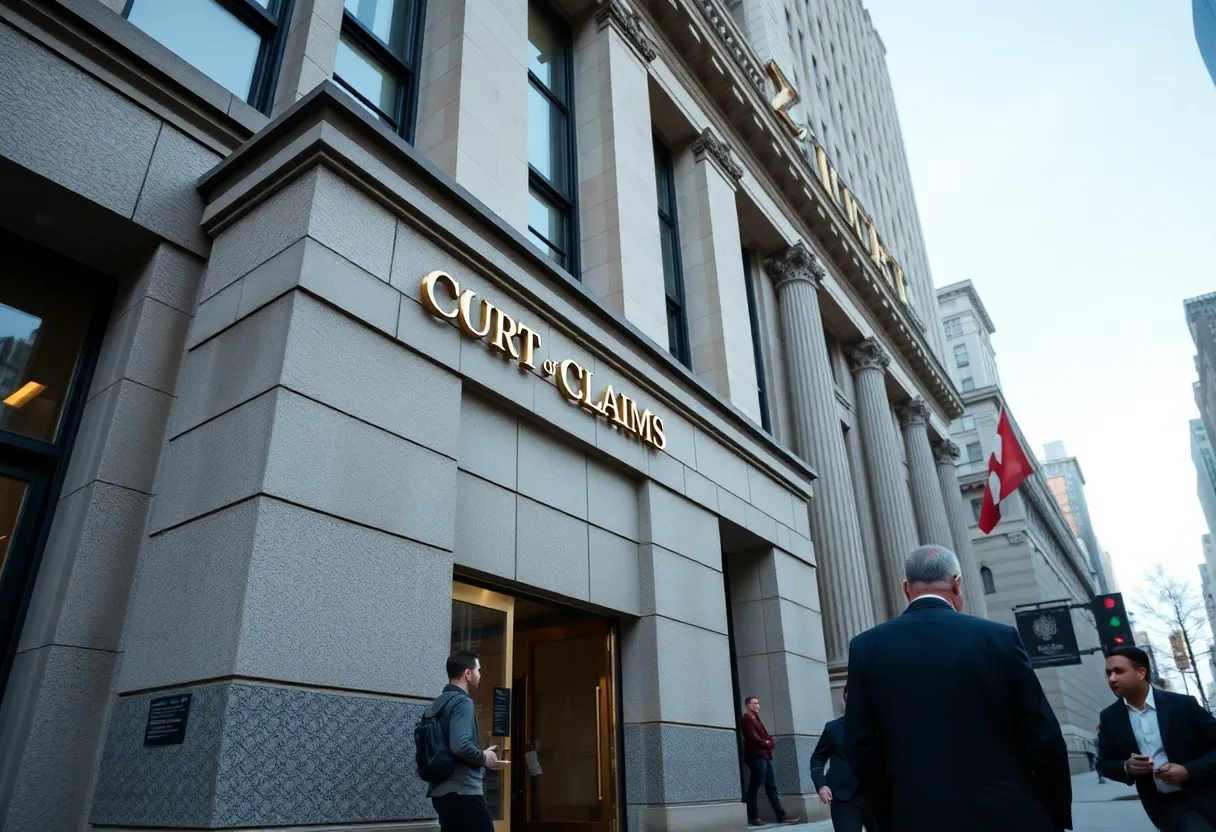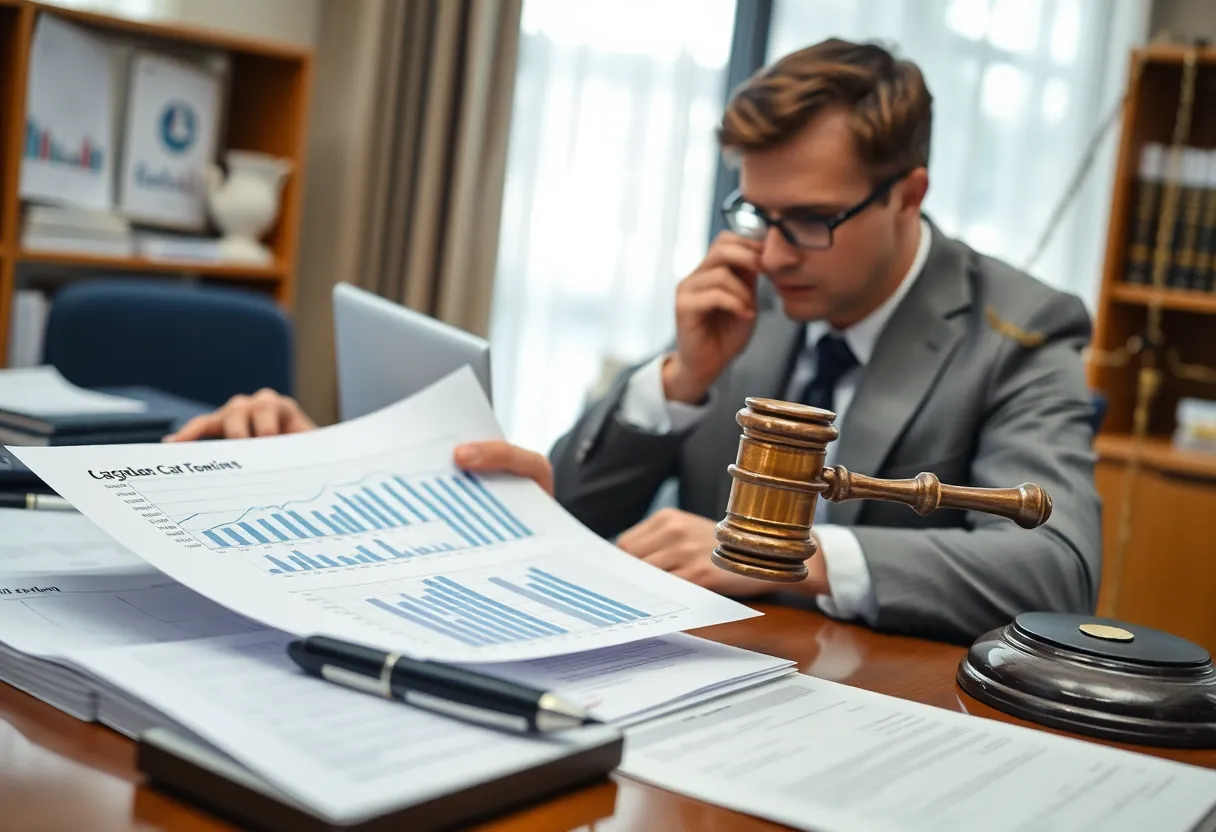News Summary
The Court of Claims in New York plays a vital role in allowing individuals to seek justice against the state despite sovereign immunity. Established in 1949, the court addresses a variety of cases, particularly those involving public entities and wrongful confinement. Unlike traditional courts, it operates without juries, providing a specialized judicial approach. With judges known for fair rulings, the Court of Claims marks a significant shift in the legal landscape, enhancing accountability in government actions and ensuring individual rights are upheld.
New York – The Court of Claims in New York has been an essential part of the state’s judicial system since its inception in 1949. This court was established following constitutional amendments that allowed the state and its entities to be sued, granting individuals a pathway to seek justice against governmental actions. Currently, the court addresses an average of 1,500 cases annually, with rulings made by judges appointed by the governor who operate without juries.
Although sovereign immunity traditionally shields the state from lawsuits unless express permission is given through legislation, the Court of Claims provides a venue to challenge this immunity. It hears cases related to a wide array of matters, including grievances involving public universities, medical centers, and even situations of property appropriation where landowners seek fair compensation for their losses.
This court’s ability to handle cases is particularly significant given its unique framework. Unlike other courts that feature juries, decisions in the Court of Claims are made solely by judges, introducing a level of expertise and uniformity in rulings that can result in favorable outcomes for plaintiffs, especially in cases involving personal injuries like slip-and-fall accidents or unsafe conditions on state roads.
In recent years, a prominent increase in cases involving incarcerated individuals has emerged, particularly following the legal changes initiated after the Attica uprising in 1971. These developments have heightened the importance of ensuring humane treatment for those in the state’s custody. The state is required to provide safe living conditions and adequate nutrition for inmates, and individuals can pursue lawsuits for wrongful confinement. However, success in these lawsuits necessitates a strict standard of proof, often requiring demonstration of egregious misconduct or severe negligence on the part of the state.
The backdrop of sovereign immunity in New York dates back to colonial times when the concept derived from English law characterized monarchs as infallible. Although this notion has evolved over time, it continued to dominantly influence New York’s legal landscape until substantial changes occurred, especially around the period of the Erie Canal’s development. This marked the slow progression toward enabling individuals to access justice in cases against the state.
The Court of Claims is currently staffed with 27 judges working from nine locations throughout New York. These judges have gained a reputation for ruling fairly and justly, often siding with plaintiffs in cases that might traditionally be expected to favor the state. This is evident through the increasing trend of rulings in favor of claimants, reflecting a changing attitude toward sovereign immunity.
In examining the broader context of New York’s judicial system, the Court of Claims exemplifies a crucial balancing act between state protection and individual rights. The establishment of this court instigated a pivotal shift in how justice can be sought against government actions, irrespective of the longstanding tradition of sovereign immunity. There is an underlying commitment among the judges to ensure that justice is served in line with the principles of fairness and accountability.
Looking forward, the next column will delve into localized courts that have a direct impact on communities throughout New York, further exploring the judicial mechanisms in place that strive to protect individual rights and navigate the complexities of justice within various localities.
Deeper Dive: News & Info About This Topic
- Long Island Business News: Understanding New York’s Court of Claims
- Wikipedia: Court of Claims
- New York Law Journal: Section 11-b: The Court of Claims’ Unique Jurisdictional Hurdle
- Encyclopedia Britannica: Sovereign Immunity
- Insurance Business America: New York Court Revives Labor Law Claim After Ladder Fall
- Google Search: Court of Claims New York

Author: STAFF HERE NEW YORK WRITER
The NEW YORK STAFF WRITER represents the experienced team at HERENewYork.com, your go-to source for actionable local news and information in New York, the five boroughs, and beyond. Specializing in "news you can use," we cover essential topics like product reviews for personal and business needs, local business directories, politics, real estate trends, neighborhood insights, and state news affecting the area—with deep expertise drawn from years of dedicated reporting and strong community input, including local press releases and business updates. We deliver top reporting on high-value events such as New York Fashion Week, Macy's Thanksgiving Day Parade, and Tribeca Film Festival. Our coverage extends to key organizations like the Greater New York Chamber of Commerce and United Way of New York, plus leading businesses in finance and media that power the local economy such as JPMorgan Chase, Goldman Sachs, and Bloomberg. As part of the broader HERE network, including HEREBuffalo.com, we provide comprehensive, credible insights into New York's dynamic landscape.





